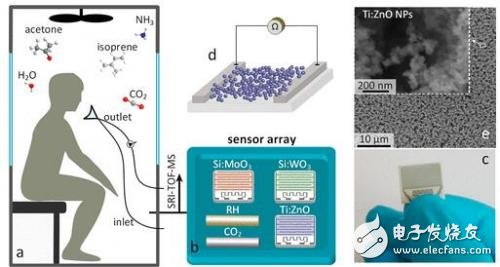At present, there are many ways for search and rescue teams to find survivors after disasters such as earthquakes or explosions. According to the report of Memes, recently, research teams from Austria, Switzerland and Cyprus have added a powerful new technology to search and rescue. This technology can use only economical sensors to help search and rescue teams find trapped people in the rubble. .
The sensor is lightweight and portable, allowing it to be carried by the first searchers (such as search and rescue dogs) and easily installed on drones. Therefore, it can find survivors in the most precious time after the disaster, which is decisive for the survival of the survivors.
SoTIris Pratsinis, professor of process engineering at ETH Zurich in Switzerland, described: “After the earthquake, many victims were trapped under collapsed buildings, and there was an urgent need for quick rescue. Because in the first few hours, Survival rates decline sharply over time. Currently, search and rescue dogs are an indispensable helper for urban search and rescue because they have the unique ability to sniff out trapped humans from the ruins. However, the scope of search and rescue dogs is Physical strength is limited and they are very sensitive to stress. Therefore, we have developed a palm-sized, inexpensive sensor array that detects survivors by sniffing human chemistry."
The small device from the team consists of five sensors. Two of these are sensors that detect humidity and carbon dioxide and are available directly from the market. The other three sensors are custom-made to detect chemicals released from breath and skin such as acetone, ammonia and isoprene, even for trace, level-level concentrations. The equipment used in search and rescue missions is cumbersome and expensive. If the chemical concentration is not high enough, the signal will be missed. In contrast, the newly developed small device sensor is more practical.
Pratsinis continues to add: "So far, we have tested the sensors in a simulated test of trapped humans. During the test, the volunteers were kept in a well-ventilated room to accumulate their breathing and skin. Released chemicals. These sensors quickly detect the presence of humans by inducing trace amounts of chemicals (only 3 parts per billion) that have reached unprecedented levels of portable detectors. The next step is to work with disasters. After field testing of the sensor array under similar environmental conditions."

The experimental setup is shown in the figure: (a) The skin of the trapped volunteer and the chemicals released by the breath accumulate in a certain volume of the room. (b) The sensor array consists of three chemical sensors (MoO3-doped silicon, WO3-doped silicon and ZnO-doped titanium) for detecting ammonia, acetone and isoprene, and two commercial sensors for detecting humidity and carbon dioxide. . Cross-validation was also performed using the SRI-TOF-MS measurement method. (c) Photograph of the appearance of the sensor. (d) The sensing element is formed of a porous semiconductor film which directly forms agglomerated/polymerized metal oxide by flame deposition. (e) A top view of a scanning electron microscope using titanium-doped ZnO as an example.
The current project results have been published in the American Chemical Society journal AnalyTIcal Chemistry, entitled "Sensing Humans with Sensor Arrays."
disposable electronic cigarette disposable vape pen disposable e-cig
Shenzhen Xcool Vapor Technology Co.,Ltd , http://www.xcoolvapor.com